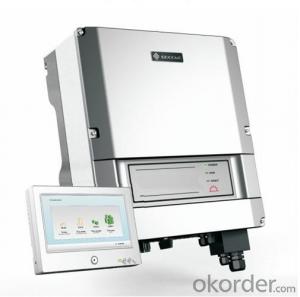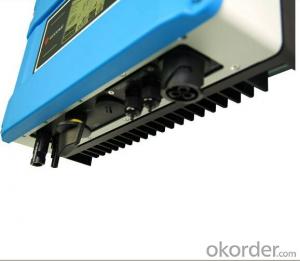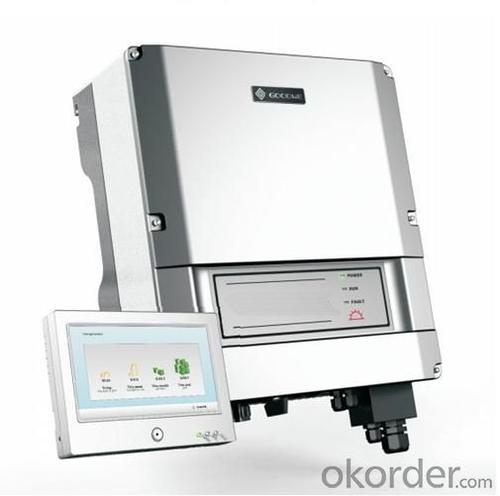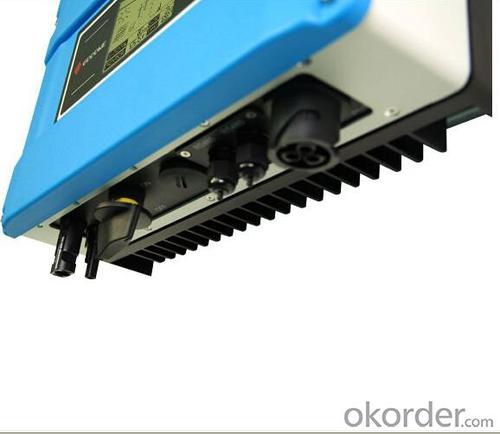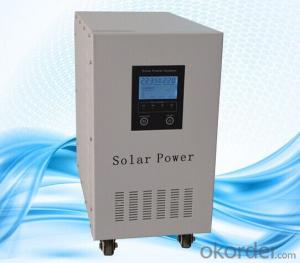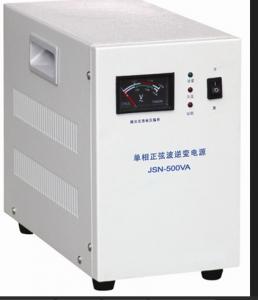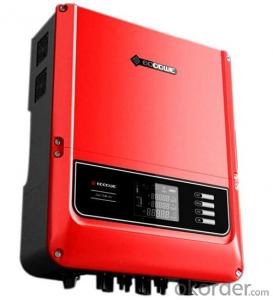Solar Inverter Solar Panel GW4000D-JP
OKorder Service Pledge
OKorder Financial Service
You Might Also Like
GW4000D-JP
JP Series Inverter is suitable to the domestic applications, and designed under modern ID concept, it has created a new standard for inverter technology with more advanced reactive compensation technology and dual MPPT trackers. Not only be able to connect with two phase grid system, this model but also could run as off-grid model, and the wide range of frequency of 50/60Hz makes it a good choice for Japan market. Moreover, the specialized monitor could perfectly control the inverter operation and data logging. IP65 high protective class of housing ensures the inverter work persistently and steadily under all critical environment.
Datasheet
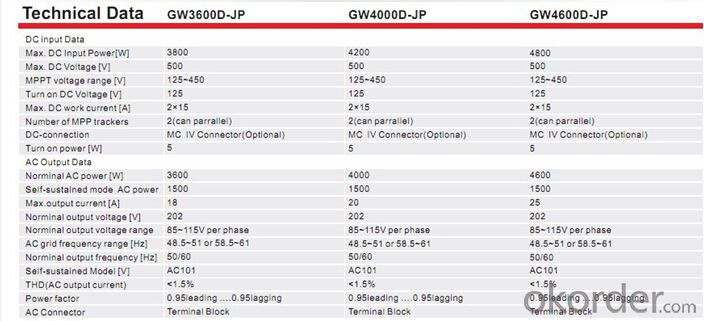
- Q: How does a solar inverter handle power surges or fluctuations?
- A solar inverter handles power surges or fluctuations by using advanced circuitry and protective measures. It typically includes surge protection devices that can absorb excessive voltage spikes, diverting them away from the system. Additionally, the inverter continuously monitors the grid voltage and adjusts its own output accordingly to maintain a stable and safe supply of electricity.
- Q: How do you calculate the efficiency of a solar inverter?
- The efficiency of a solar inverter can be calculated by dividing the output power of the inverter by the input power it receives from the solar panels. This ratio is then multiplied by 100 to express the efficiency as a percentage.
- Q: What is the purpose of a solar inverter in a solar power system?
- The purpose of a solar inverter in a solar power system is to convert the direct current (DC) electricity produced by solar panels into alternating current (AC) electricity, which is the type of electricity used in most household appliances and the power grid.
- Q: What is the role of a grid monitoring feature in a solar inverter?
- The role of a grid monitoring feature in a solar inverter is to constantly monitor the electrical grid for voltage, frequency, and other parameters. This feature ensures that the solar inverter is synchronized with the grid and operates within the specified limits. It helps in maintaining a stable and reliable connection between the solar system and the grid, preventing any damage to the inverter or the grid. Additionally, grid monitoring also enables the solar inverter to detect any faults or abnormalities in the grid and take appropriate measures to protect the system and ensure safe operation.
- Q: What is the role of a solar inverter in grid management and stability?
- The role of a solar inverter in grid management and stability is to convert the direct current (DC) electricity generated by solar panels into alternating current (AC) electricity that can be fed into the grid. It ensures that the electricity generated by the solar panels is synchronized with the grid's frequency and voltage, thereby maintaining grid stability. Additionally, solar inverters can also provide grid management functionalities like reactive power control and voltage regulation, helping to balance and stabilize the overall grid system.
- Q: How does a solar inverter handle reactive power?
- A solar inverter handles reactive power by actively managing and controlling the flow of reactive power between the solar panels and the electrical grid. It uses advanced electronics and control algorithms to ensure that the reactive power generated by the solar panels is either supplied to or absorbed from the grid, depending on the grid's requirements. This helps to maintain the power factor within acceptable limits and prevents issues such as voltage instability or flickering.
- Q: Can a solar inverter be used with solar-powered electric vehicle charging stations?
- Yes, a solar inverter can be used with solar-powered electric vehicle charging stations. A solar inverter is responsible for converting the DC power generated by solar panels into AC power that can be used to charge electric vehicles. By using a solar inverter, the solar energy harvested from the panels can be efficiently utilized to charge EVs, making it an environmentally-friendly and sustainable option for charging stations.
- Q: Are there any ongoing maintenance requirements for a solar inverter?
- Yes, there are ongoing maintenance requirements for a solar inverter. Regular inspections, cleaning, and monitoring of performance are recommended to ensure optimal functioning. Additionally, routine checks of electrical connections, firmware updates, and replacement of faulty components may be necessary to maintain the efficiency and longevity of the inverter.
- Q: Can a solar inverter be used with a wind turbine?
- Yes, a solar inverter can be used with a wind turbine. Both solar panels and wind turbines generate DC (direct current) electricity, which needs to be converted to AC (alternating current) to be used in most household appliances and the electrical grid. A solar inverter is designed to convert DC electricity from solar panels into AC electricity, and it can also be used to convert the DC electricity generated by a wind turbine into AC electricity. However, it is important to note that wind turbines usually generate higher voltage and fluctuating currents compared to solar panels, so the inverter used with a wind turbine may need to be specifically designed to handle these variations. Additionally, wind turbines often have their own specialized inverters that are optimized for their unique electrical characteristics.
- Q: How does a solar inverter handle voltage flicker in the grid?
- A solar inverter handles voltage flicker in the grid by employing various control mechanisms. It continuously monitors the grid voltage and adjusts its own output accordingly to compensate for any fluctuations or flickering. By dynamically regulating its power output, the solar inverter helps stabilize the grid voltage and mitigate the impact of voltage flicker, ensuring a stable and reliable power supply.
Send your message to us
Solar Inverter Solar Panel GW4000D-JP
OKorder Service Pledge
OKorder Financial Service
Similar products
Hot products
Hot Searches
Related keywords
